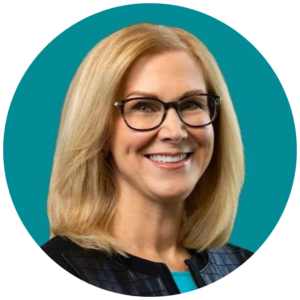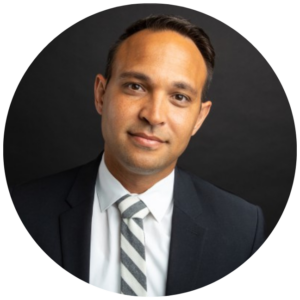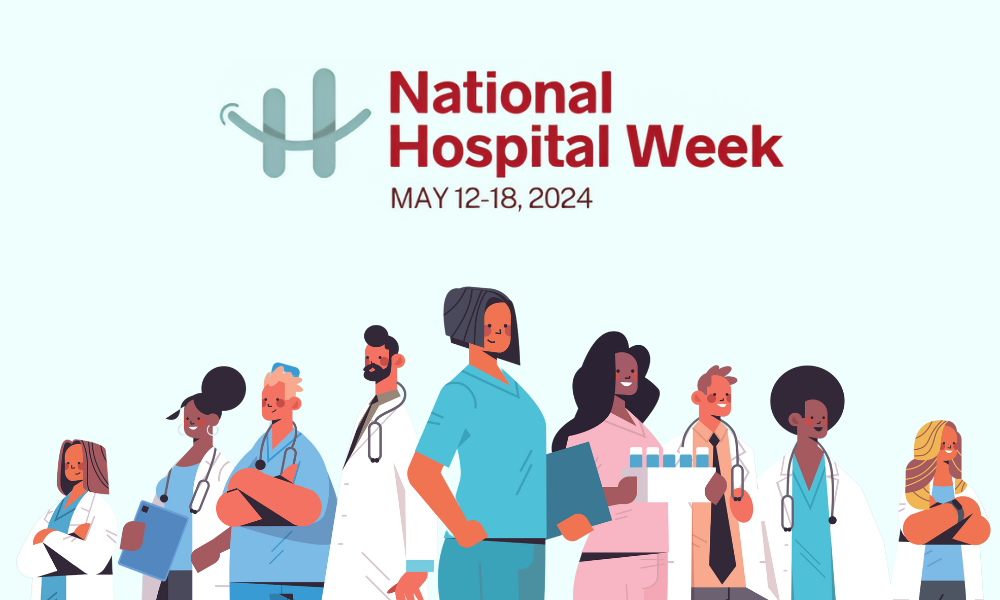New Frontiers in ’24: The IMLC’s Quest to Expand into All 50 States
Jan. 9, 2024
The Interstate Medical Licensure Compact Commission aims to include four additional states and four US territories in 2024, thereby enhancing the flexibility of locum tenens physicians to practice across multiple states.
Ten years ago, it was a major hassle for a physician to pick up a license outside their State of Principal License. The IMLC created an expedited pathway to medical licensures, streamlining the process by letting physicians apply through the Compact, qualify to practice in other states, and get a state license in seven to 10 days. Currently, 39 states, Guam, and Washington DC, are members of the IMLC.
Eleven states haven’t signed onto the Compact, but four states — New York, Massachusetts, North Carolina, and Florida — introduced bills in 2023 to do so.
The proposed bills are in various stages of their state’s legislative process and will carry over into the current year’s legislative session. Of the four states mentioned, all but North Carolina are currently in session. The North Carolina Legislature reconvenes on April 24.
![]() Marschall Smith, executive director of the IMLC Commission (IMLCC), told MedpageToday that four new territories have also shown interest in joining the Compact. Smith said the IMLCC’s “understanding is that there is active interest in the Virgin Islands and Puerto Rico,” as well as the Northern and Southern Mariana Islands.
Marschall Smith, executive director of the IMLC Commission (IMLCC), told MedpageToday that four new territories have also shown interest in joining the Compact. Smith said the IMLCC’s “understanding is that there is active interest in the Virgin Islands and Puerto Rico,” as well as the Northern and Southern Mariana Islands.
This Compact has been a godsend for locum tenens physicians looking to practice in multiple states, as well as for the agencies that place these physicians. Smith explains that the process is “safe and secure” and has a “high bar” standard. The IMLCC reported that more than 17% of all licenses issued in 2022 passed through the Compact’s accelerated licensing process.
In recent years, the Compact was spurred along by the COVID-19 pandemic, which increased the need for cross-state licensure due to the rise in telemedicine. The Federation of State Medical Boards is reevaluating licensure policies related to telemedicine to accommodate these changes while ensuring patient care and physician access. Other healthcare professionals, such as nurses and physician assistants, are exploring similar compacts to facilitate multistate practice.
Read more about the IMLC and the states that plan to add to it in 2024 from MedpageToday. Also, check out Locumpedia’s in-depth report on the IMLC from last November.
La Vida Locum
MPLT: Healthcare Facilities Embrace Social Media for Education, Community, and Recruitment
Dec. 28, 2023
Healthcare facilities are looking to use social media for marketing purposes, but they’re finding it to be a versatile tool for other purposes. Here are three strategies healthcare professionals can use to harness social media’s potential:
1. Patient education: Social media offers a platform for healthcare providers to share valuable information on nutrition, stress management, mental health, and illness prevention. Encouraging providers to post informational content on platforms like LinkedIn, Facebook, and Instagram enhances patient education, positioning the facility as a valuable resource.
2. Provider community: Social media fosters community among healthcare professionals, reducing burnout and stress. It allows them to collaborate, share ideas, and showcase accomplishments. Encouraging positive and professional engagement on social media can boost credibility and provide a supportive outlet.
3. Recruiting talent: Social media can be valuable in recruiting efforts. By showcasing the facility’s mission and culture through engaging content, healthcare organizations can attract top-quality candidates and increase interest in job openings. Prospective candidates often visit employers’ social media channels before applying for positions.
Healthcare organizations can reap a wide range of benefits for their practice by targeting patients and providers through various social media initiatives. For more details, read what MPLT Healthcare says in its full article.
IRS Increases Mileage Rates for Locum Tenens Providers
Dec. 28, 2023
The IRS introduced new standard mileage rates for 2024, effective January 1. The new mileage rates are essential for calculating deductibles for locum providers and individuals using their vehicles for business, charity, medical, or moving purposes.
For business use, the rate is now 67 cents per mile, a 1.5-cent increase from the previous year. Active duty members of the Armed Forces traveling will receive a rate of 21 cents per mile, a decrease of 1 cent from 2023. Meanwhile, the rate for driving in service of charitable organizations remains steady at 14 cents per mile.
Because of the Tax Cuts and Jobs Act, staying updated on tax return changes is crucial. Notably, miscellaneous itemized deductions for unreimbursed employee travel expenses are no longer eligible, which can potentially impact a provider’s tax returns if they previously claimed this deduction.
Providers can choose between calculating their vehicle’s actual costs or using the standard mileage rates. In the first year of your vehicle’s business use, they can opt for the standard mileage rate and switch between actual expenses and standard mileage rates in subsequent years. If drivers lease their vehicles, selecting the standard mileage rate means they must stick with it for the entire lease period.
To get a comprehensive breakdown of the 2024 standard mileage rates, check out the full article from Wapiti Medical Staffing or go to the IRS website.
Medicus Foresees Four Key Healthcare Trends in 2024
Jan. 5, 2024
Medicus Healthcare Solutions recently presented four trends they expect to see more of in the coming year. Each trend outlined below highlights developments and critical challenges in the medical field and offers a comprehensive view of the evolving dynamics in healthcare.
Physician Shortage: A Looming Crisis
The physician shortage is looming, and the demand for specialists is rising. There’s a simple reason for increased demand: We have an aging population, and that demographic typically demands more surgical specialists. For the first time in more than a decade, there’s been an increase in specialists such as gastroenterologists, radiologists, and rheumatologists. These providers generate the most revenue for hospitals and securing permanent or locum tenens specialist physicians in 2024 will be essential for a facility’s finances.
Retail Clinics Rising
Patient visits to retail clinics have ballooned by 200% over the past five years. Retail behemoths like CVS, Walmart, and Amazon are reshaping care delivery with accessible, affordable options. This boom correlates with fewer ER visits and primary care claims, suggesting a potential evolution towards a more integrated healthcare model through strategic partnerships.
Primary Care’s Predicament
A shortfall of up to 48,000 primary care physicians by 2034 paints a grim picture. Over 83 million Americans are already in underserved areas for primary care. With new medical grads turning away from primary care due to lower pay and administrative burdens, the industry is leaning on telehealth, AI, and the use of nurse practitioners and physician assistants. Locum tenens professionals are vital in filling these gaps.
AI: The Healthcare Game-Changer
Artificial intelligence is making waves in healthcare, from boosting diagnostic precision to streamlining administrative tasks and elevating patient care. AI’s applications span administrative functions, medical imaging, remote monitoring, and AI-driven surgical robotics. These innovations promise enhanced patient outcomes and greater efficiency in healthcare facilities.
For a more comprehensive analysis of these trends, consult Medicus Healthcare Solutions’ detailed report.
Locum Leaders
LocumTenens.com Launches Clinical Operations Division for Advanced Telehealth Solutions
Jan. 4, 2024
LocumTenens.com recently established a new Clinical Operations division led by Pamela Ograbisz, DNP, FNP-BC, who has more than 20 years of experience in telehealth, critical care, and internal medicine.
This division will oversee telehealth, workforce planning technologies, government relations, and advocacy related to telehealth and advanced practice providers. LocumTenens.com hopes to provide flexible and efficient staffing strategies while ensuring the delivery of safe and effective care models for clients and patients.
Dr. Ograbisz, in addition to her role as vice president of Clinical Operations, also leads LT Telehealth and is responsible for overseeing all telehealth initiatives and advanced practice provider workforce solutions. Her clinical background includes specialization in cardiothoracic surgery and internal medicine, with degrees from George Mason University, Old Dominion University, and Augusta University/Medical College of Georgia.
For more information, see the full press release from LocumTenens.com.
AMN Healthcare CEO Interviewed by Modern Healthcare on State of the Healthcare Industry
Dec. 7, 2023

Healthcare leaders face the challenge of optimizing their workforce to address these issues and better plan for the future. In the discussion with Peres, Grace emphasized the importance of healthcare leaders adapting to the industry’s evolving dynamics.
View the full 20-minute interview with Grace on YouTube.
SIA: Locums Experienced ‘Remarkable’ Growth Over the Past 2 Years
Jan. 9, 2024
The latest Healthcare Staffing Report from Staffing Industry Analysts shows that after experiencing remarkable growth of 27% in 2022, the locum tenens sector is projected to expand by 12% in 2023 and continue with a 7% growth rate this year.
The primary driver behind the locums growth, SIA claims, is the aging population, with the number of individuals aged 65 and over increasing by over 38% from 2010 to 2020.
As this population ages and faces more health issues, there is an increased demand for complex care plans typically provided by physicians. The Association of American Medical Colleges projects that the impending physician shortage will lead to health systems increasingly relying on locum tenens to bridge staffing gaps and meet rising patient demand.
Also from the report:
The utilization of telehealth surged from 910,940 users in 2020 to over 8.5 million in 2022. This rise in telehealth has proven a successful solution for patients with various medical needs and those facing barriers to care, such as those residing in rural areas.
Also, addressing the issue of burnout among physicians, the American Medical Association reported a decline in burnout rates to 53% in 2022 from 63% in 2021, although still elevated compared to pre-pandemic levels at 38%. Hospitals increasingly turn to artificial intelligence to combat burnout and reduce administrative tasks. AI-powered apps are used for transcription and documentation, allowing clinicians to focus on patient care and potentially reducing burnout.
Additionally, staffing firms are adopting AI in locum tenens recruitment to automate routine tasks, simplify processes, and enhance operational efficiency. AI helps attract and hire quality talent and offers the potential for higher company profits because of quicker time-to-fill for healthcare clients.
Corporate members can get more comprehensive insights into the locum tenens staffing market in the full Locum Tenens Market Growth Assessment report or by viewing the full Healthcare Staffing Report here.
Making the Rounds
Harnessing Disagreements as Growth Opportunities in Healthcare Leadership
Jan. 4, 2024
In the healthcare industry, workplace disagreements are common, but these can be opportunities for growth and collaboration. According to Justin Hale, a principal consultant at Crucial Learning, disagreements themselves are not the issue.

Unresolved conflict in healthcare can be detrimental to patient care and team dynamics. Hale suggests people often react defensively in disagreements, entering a “fight or flight” mode that hampers their rational decision-making. If we want to resolve these conflicts effectively, we must move beyond personal agendas and learn to prioritize the well-being of patients and relationships within the team.
The American Management Association highlighted previously how effective conflict resolution strategies can reduce stress, improve employee retention, and foster better workplace relationships. Hale provides four tips for successfully resolving conflicts:
1. Focus on long-term goals and intentions, considering what’s best for patients, relationships, and staff.
2. Humanize the other person by trying to understand their perspective, even if it is different.
3. Emphasizing commonality rather than differences leads to more respectful and productive disagreements.
4. Ask questions to understand the other person’s position, research, and objectives, finding common ground in shared goals.
Creating a culture of respect and innovation in healthcare requires our leaders to encourage open communication and invite different perspectives. This approach can lead to better decision-making, alternative solutions, and increased unity within healthcare teams, benefiting patient care and the entire industry.
Learn more about conflict resolution strategies in healthcare in the full story by AMN Healthcare.
Physician-Turned-CEO Offers His Advice to Improve Physician Relations in Your Hospital
Jan. 3, 2024

In a recent interview on the HealthLeaders podcast, Pasche offered advice to fellow CEOs on improving physician relations. While the issues are daunting, Pasche suggests that the formula for success is more straightforward.
Through his insight, he hopes to provide valuable guidance for healthcare leaders looking to address these pressing concerns.
To learn more, check out the article from HealthLeaders or listen to the podcast episode to hear more of the conversation between Pasche and HealthLeaders’ strategy editor Jay Asser.
Second Opinion
Walgreens Reassesses VillageMD Expansion, Closes 60 Clinics Amid Patient Recruitment Challenges
Jan. 7, 2024
Walgreens CEO Tim Wentworth recently disclosed the expansion plan of Chicago-based startup VillageMD’s doctor-staffed clinics needed to be scaled back. The development highlights the challenges retailers face opening primary care centers nationwide. Walgreens, which has invested billions and owns about half of VillageMD, announced plans to close 60 underperforming VillageMD locations to focus on high-opportunity markets.
One of the most significant issues these clinics have is the inability to fill “patient panels,” which represent the number of individual patients under the care of a specific provider. Walgreens did not reveal the exact panel size for VillageMD physicians; primary care doctors typically manage panels of 2,500 patients or more, which can take months to build.
Walgreens’ strategic shift in primary care expansion comes as rivals like CVS Health, Walmart, and Amazon also delve into providing medical care in retail settings with similar challenges amid the healthcare labor shortage.
For more details on Walgreens’ plan to scale back clinics, read the full piece from Forbes.










